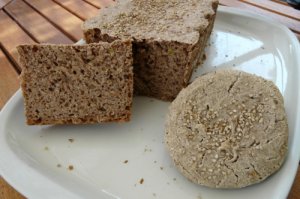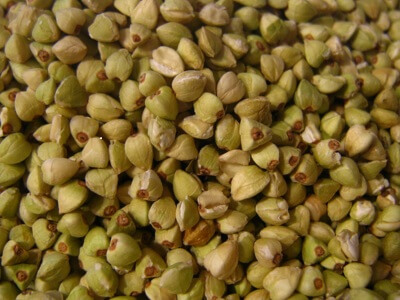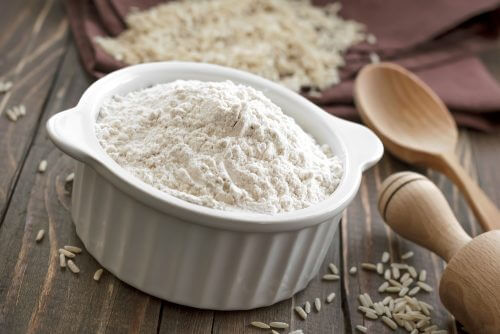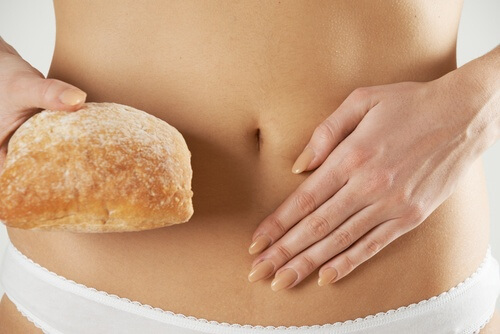Gluten-free Buckwheat Rice Bread: Easy and Delicious

Gluten-free bread is a favorite among people with Celiac disease and those who don’t digest the protein well.
However, it’s also started to find a way into the diet of others who just want a variation from wheat bread or want to eat a more digestion-friendly diet.
Find out below how easy and quick it is to make gluten-free bread that the whole family will love in this article.
Is it hard to make gluten-free bread?

The internet is full of gluten-free bread recipes of all varieties and all kinds of ingredients.
However, most of them call for expensive or hard-to-find ingredients, don’t have a nice texture, or are complicated to make.
The gluten-free bread we’ll detail below has many advantages:
- The ingredients are easy to find.
- It’s a budget-friendly bread.
- It has a spongy but compact texture.
- It’s easy to make, uses a mixer and doesn’t requiring kneading.
Buckwheat doesn’t contain gluten
Buckwheat is originally from Asia. However, today it is grown in many different countries, including Europe.
The name can be confusing, since it’s not wheat or even a grain. It’s actually a seed, with all of the nutritional benefits seeds have.
It allows you to enjoy bread with fewer carbohydrates and more protein and fiber, since it contains more than 10% of easily absorbed protein, as well as 8 essential amino acids.
The name buckwheat does, however, give you a clue that you can use it the same way you would use normal wheat flour. It’s even used in France to make savory crepes, giving them a distinctive flavor.
Rice flour as a great alternative

However, if you don’t combine it with other flours, the texture can end up too dense.
We recommend using brown rice flour, as most varieties are refined, and when you take the fiber out of the grain, the end product is harder to digest and may cause constipation.
Gluten-free bread recipe
Ingredients
- 2 eggs
- 2 cups of water (500 ml)
- 1/2 cup of extra virgin olive oil (100 g)
- 2 tablespoons of brown sugar (20 g)
- 1 tablespoon of sea salt (10 g)
- 2 cups of buckwheat flour (220 g)
- 1 cup of rice flour (120 g)
- 1 packet of yeast (12 g)
- Seeds to sprinkle on top, optional (sunflower, pumpkin, sesame, flax, or chia)
Tools
To make this bread, you’ll need a mixer.
What do I do?
- First of all, beat the eggs for at least one minute. This step is important for giving the bread its spongy texture.
- Next, add the liquid ingredients, the water and oil, and beat again.
Note: If the room temperature is cold, the water should be hot.
- Then, add the sugar and salt, beat, and set aside.
- Mix the two flours together and add them gradually to the other mixture as you beat. Beat until well-mixed.
- Lastly, add the yeast and beat again. The result will be a fairly thin dough.
- Preheat the oven to 400 degrees and chill the bread dough in the refrigerator for 15 minutes. The sudden temperature change will activate the yeast and give you a spongier bread.
- After this time, put the dough in the bread pan, and if you like, sprinkle the seeds on top.
- Put the pan into the oven and cook for 40 minutes at 350 degrees.
- Then, check to see if the inside is done by inserting a knife or toothpick. If it comes out clean, it’s done.

“Before you go, check out this recipe, too: How to Make Gluten-Free, Lactose-Free Crackers”
Ideas
If you’re not a huge fan of this gluten-free bread, you can make some changes and give it a different taste. You can add:
- Spices like ginger, cinnamon, cardamom, or cayenne pepper
- Herbs like oregano, thyme, rosemary, or basil
- Powdered garlic
- Milk alternatives instead of the water (coconut, almond, oat milk)
- Corn flour or garbanzo flour
- Sweet version of the bread, with cacao, spices, honey, nuts, etc.
All cited sources were thoroughly reviewed by our team to ensure their quality, reliability, currency, and validity. The bibliography of this article was considered reliable and of academic or scientific accuracy.
- Herrera, M.J., Hermoso, M.A., Quera, R., (2009). Enfermedad celíaca y su patogenia. Revista Médica de Chile n. 12. Disponible en: https://scielo.conicyt.cl/scielo.php?script=sci_arttext&pid=S0034-98872009001200012
This text is provided for informational purposes only and does not replace consultation with a professional. If in doubt, consult your specialist.








